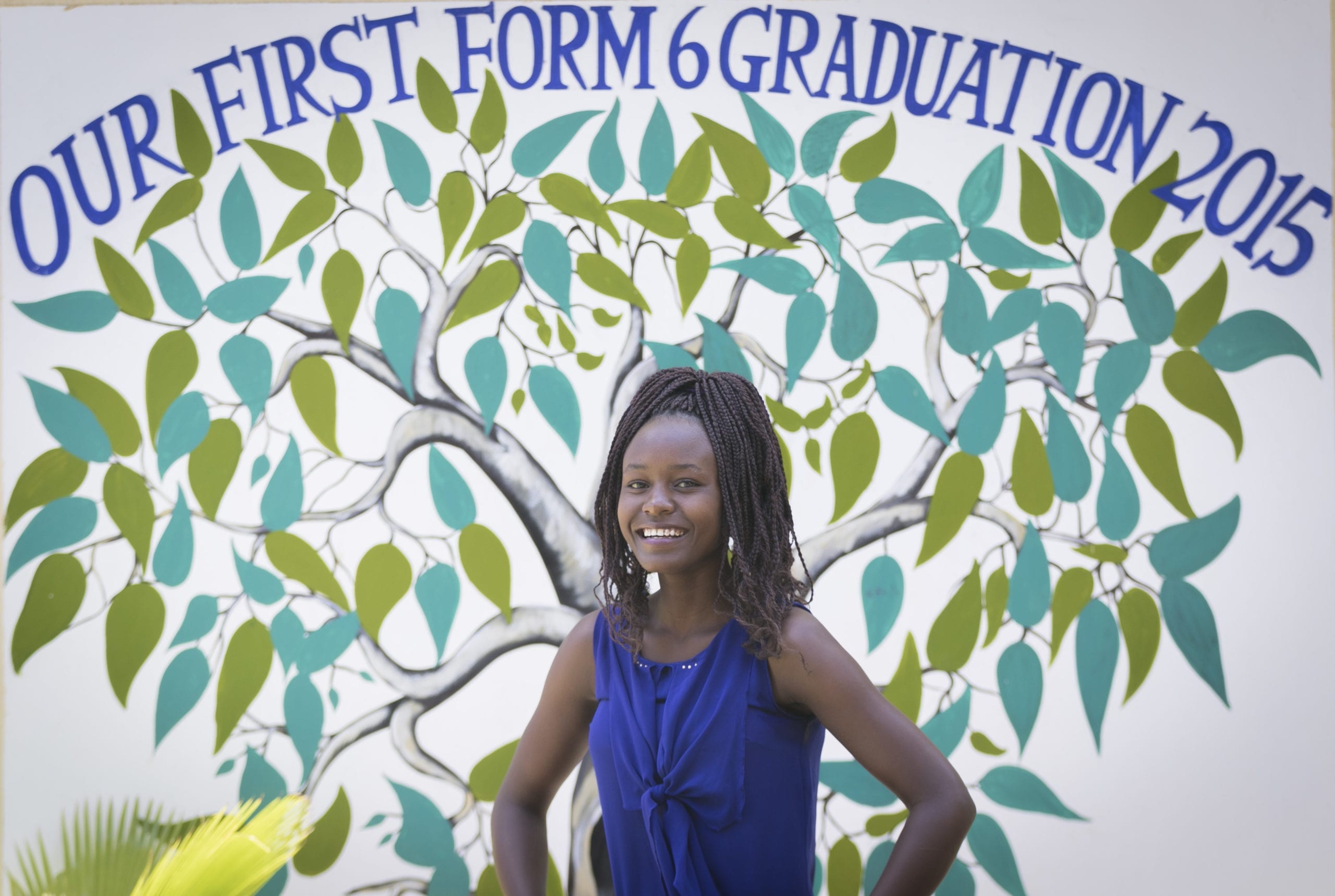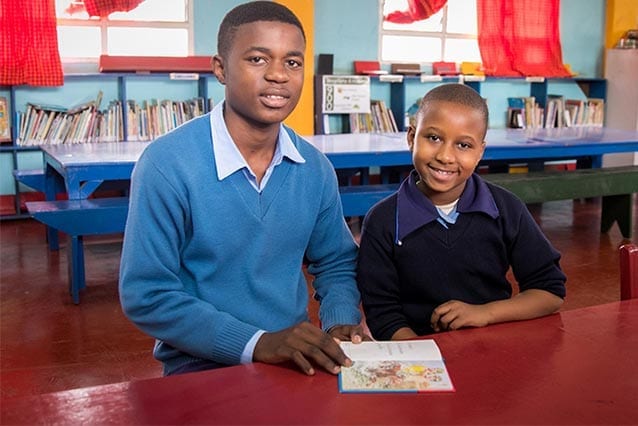As the story goes, St Jude's started in 2002 with just three students, two classrooms and one volunteer teacher who packed up her bags for Tanzania, to help with a project that was barely off the ground. That volunteer, fresh out of university, was Angela Bailey, who would leave an indelible mark on the school during her three years in Moshono. Angela recently returned to attend our annual St Jude's Day, and we were able to catch up with her to ask about her experiences and what it's like to see The School of St Jude in its present form. Below is the transcript from the interview.
St Jude's: Let’s start by giving us some background of yourself and how you got started with the school, why you came here and how you heard about it.
Angela Bailey: When I was in Year 12 I used to go to the same school that Gemma went to ten years before me and so we had a group of inspirational women speakers and Gemma was one of them. At that point she was running a charity that helped with kids going to government schools in Uganda and Tanzania. So she was running a tour group. I came for a five-week trip with her and seven other people. When we came to Moshono, this was just a plot of land with maize on it. She said she was going to start a school so I said, right, I’ve always wanted to work with kids. This was ’99-’00, sort of Christmas and New Years period. So I went home and did my diploma in children’s services for 18 months and then worked seven days a week and six nights a week just trying to save up some money. I was over here on New Years Eve 2001. That’s how it all started.
SJ: How was that being in Tanzania on New Years Eve?
AB: We went to a wedding for one of Gemma and Richard’s friends. I was exhausted, you know how the trip is. I didn’t arrive until the afternoon and then we went to this wedding in the church that went on for hours. I think it was midnight when we were in the car or something. It was all a blur.
SJ: You didn’t speak any of the language at that point, right?
AB: No.
SJ: Are you fluent now?
AB: I was pretty fluent, but it’s been five years since I’ve spoken it. I still remember quite a bit which is great.
SJ: How many times have you been back now?
AB: This will be the fourth. I left in January ’05. Then I brought back two tour groups, one in 2005 and one in 2006, just so that I could get back. The following time I came which was five years ago, I just came on my own.
SJ: Obviously this place has been growing incredibly quickly. For people who have visited the school, every time they come back there’s something new, so for you to be there from the start and to see all of this, what are your thoughts?
AB: It’s hard to put into words, to be honest with you. I just walked around my first day back and it was very emotional with tears. You see it in pictures and stuff like that but it’s hard. To be honest it’s hard to put into words. I’m really amazed and proud of how well the team has done and I think all the students are amazing. They’re becoming young adults now, all the children I taught.
SJ: Did those kids remember you after all these years?
AB: When they were kids and I’d come back they’d run up to me, but now they’re teenagers. They kind of saunter over and give me the cool hand shake and stuff like that. I got a lot of funny looks when I was first over at Usa (Smith Secondary campus), a few double-takes and stuff like that. Once word spread out, everybody’s been coming up and saying hello.
SJ: So you were at the school for three years. Did you ever expect it to get this big or what were your expectations for the school?
AB: When I came over we were still painting classrooms. Gemma had Nathaniel, who was three months old in a bassinet, she was bouncing him with one leg and painting the wall with another. She told me that ideally, the dream for the school was to have two classes of each level and having a foreigner in one and a Tanzanian in the other. Just two classes all the way up to Form 6. That was her idea and never ever did we think it would get this big.
SJ: Has that been the most surprising thing or what has?
AB: Just the whole structure of it, even just the teams that are in here and the offices. I guess the professionalism of it now because we all just used to do a little bit of everything, but now there are teams that do everything. All of the organization is the most impressive, along with the school boards and the parent boards.
SJ: It’s hard to single out a favorite memory, but if you had to choose one thing off the top of your head what would it be?
AB: The first thing is, only because I went to look at Lucumai’s (a guard) place, and one of the other guards, they were becoming elders. They invited me out to their village and they wanted me to take photos of them for the ceremony. That was a huge privilege. I guess being invited into their homes and getting to know their families. And because there were so few kids and a lot of them lived around the area, I was able to get to know them. Even by the end, I knew most of the students and their families and their backgrounds. I guess being welcomed into their culture as much as I could. It’s hard to pinpoint a moment. We used to tell the story a lot about Eric, who is now in Form 3. It was at the point we were struggling to get good kids that fitted the criteria. If a child passed all areas then they had to find somebody else who could pass all areas before they could start schools. And he couldn’t. He couldn’t find somebody else who passed all the categories. So, he just used to sit out the front of the office everyday. He just gradually learned English by listening to people in the office and the other kids walking past. One day he came up to me and just spoke to me in English, broken English, but he said “Ms Angela, I can’t come and wait here tomorrow.” After a while, with his persistence, we just put him into class and within a month he had caught up with all the other kids in the English. He was just so eager to learn. But there’s lots of little stories like that with the kids and how they got in.
SJ: When you come back and see Gemma and Kim what’s it like?
AB: I catch up with them when they come to Australia for the tours and I’m always asking a million questions. I think being back here is bringing back all the memories for us. Whenever I catch up with Gemma it’s like it was yesterday and take off where we left. I lived with Gemma for the first year and I’m the Godmother of Jacob – her kids are like my nephews. It’s good to see we can just continue on, even though it’s a long time in-between.
SJ: When you left in 2005, what did you go on to do?
AB: I went to go and study my degree so I went back to university. It was really tough going back after three years and especially teaching kids who just don’t take education for granted and wanted to be at school. That was a bit tough. I’ve continued working with kids. I was in Vietnam working with kids last year and working in Sydney running children’s services.









Replies